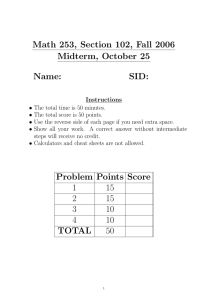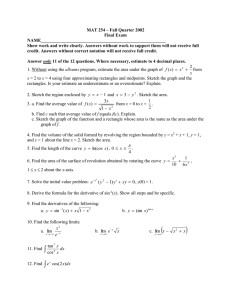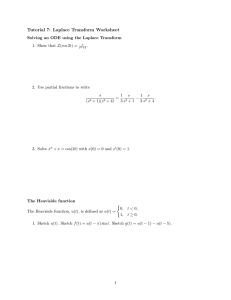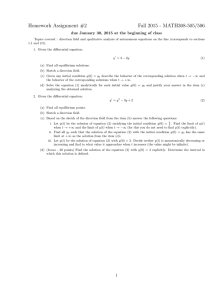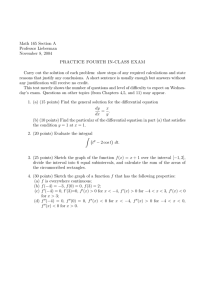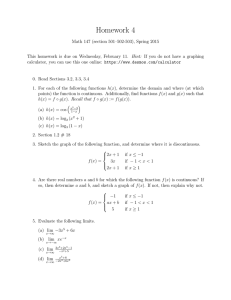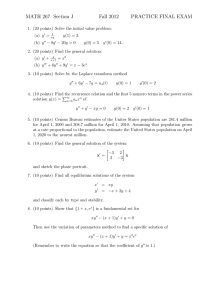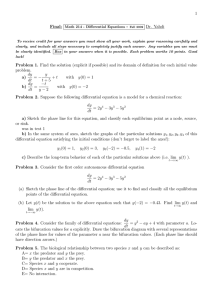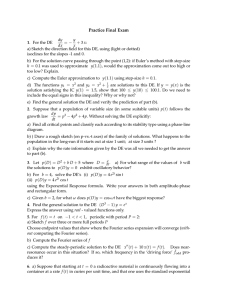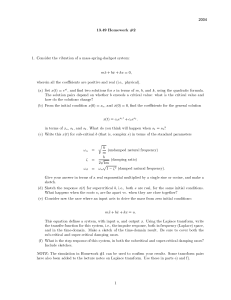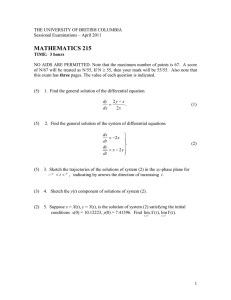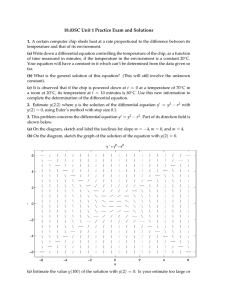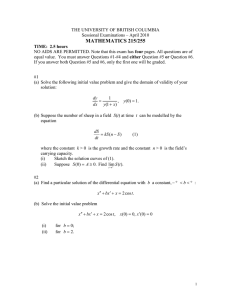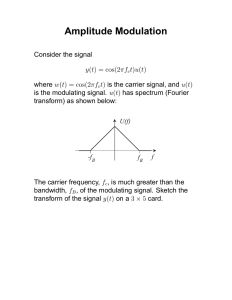MATHEMATICS 215
advertisement
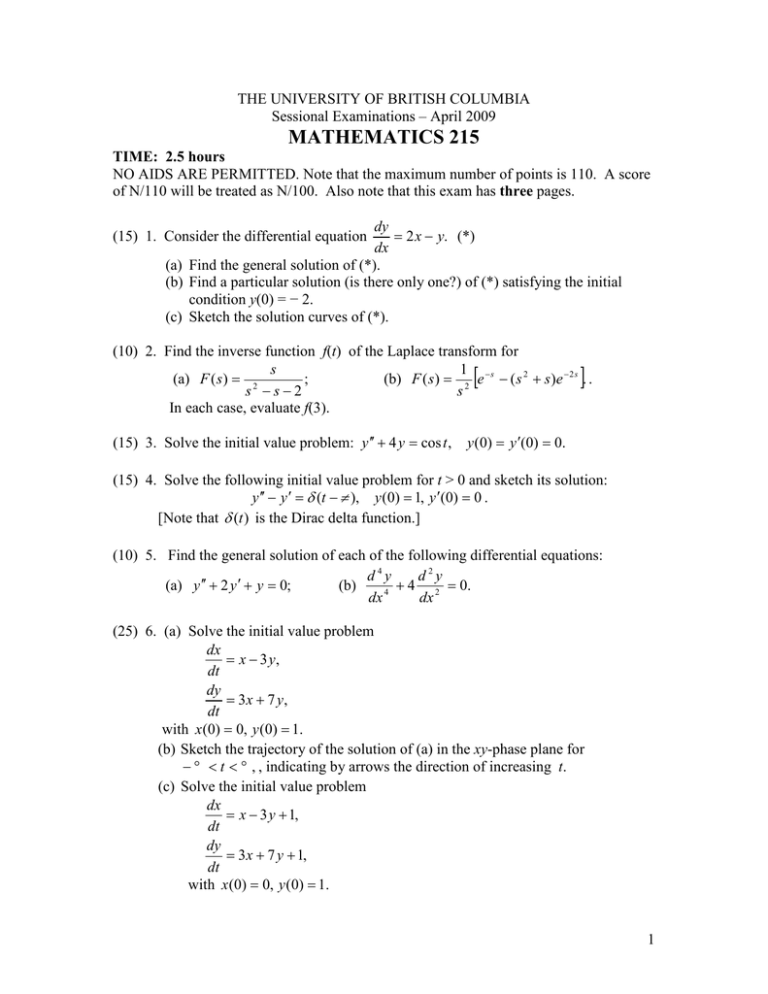
THE UNIVERSITY OF BRITISH COLUMBIA Sessional Examinations – April 2009 MATHEMATICS 215 TIME: 2.5 hours NO AIDS ARE PERMITTED. Note that the maximum number of points is 110. A score of N/110 will be treated as N/100. Also note that this exam has three pages. dy = 2 x − y. (*) dx (a) Find the general solution of (*). (b) Find a particular solution (is there only one?) of (*) satisfying the initial condition y(0) = − 2. (c) Sketch the solution curves of (*). (15) 1. Consider the differential equation (10) 2. Find the inverse function f(t) of the Laplace transform for s 1 (a) F ( s ) = 2 ; (b) F ( s ) = 2 e − s − ( s 2 + s )e − 2 s . . s −s−2 s In each case, evaluate f(3). [ (15) 3. Solve the initial value problem: y ′′ + 4 y = cos t , ] y (0) = y ′(0) = 0. (15) 4. Solve the following initial value problem for t > 0 and sketch its solution: y ′′ − y ′ = δ (t − π ), y (0) = 1, y ′(0) = 0 . [Note that δ (t ) is the Dirac delta function.] (10) 5. Find the general solution of each of the following differential equations: d4y d2y (a) y ′′ + 2 y ′ + y = 0; (b) + 4 = 0. dx 4 dx 2 (25) 6. (a) Solve the initial value problem dx = x − 3 y, dt dy = 3x + 7 y, dt with x(0) = 0, y (0) = 1. (b) Sketch the trajectory of the solution of (a) in the xy-phase plane for − ∞ < t < ∞, , indicating by arrows the direction of increasing t. (c) Solve the initial value problem dx = x − 3 y + 1, dt dy = 3 x + 7 y + 1, dt with x(0) = 0, y (0) = 1. 1 (20) 7. Consider the system dx = − y ( y − 2), dt dy = ( x − 2)( y − 2), dt for t > 0. (a) Sketch the y(t) component of the solution of this system for each of the following two sets of initial conditions: (i) x(0) = 1, y(0) = 2; (ii) x(0) = 1, y(0) = 3. (b) Suppose one has the initial condition x(0) = α, y(0) = β. Find all values of α and β for which lim x(t ) = A and lim y (t ) = B both hold for some constants A and B. t →∞ t →∞ (c) Find A and B. 2 TABLE OF INFORMATION FUNCTION LAPLACE TRANSFORM f(t) F(s) f ′(t ) sF ( s ) − f (0) u a (t ) e − as s u a (t ) f (t − a ) e − as F (s ) sin t 1 s +1 2 cos t s s +1 2 t ∫ f (τ )dτ 0 tf (t ) t ∫ f (τ ) g (t − τ )dτ F ( s) s − F ′(s ) F ( s)G ( s ) 0 δ (t − a ) e − as e at f (t ) F ( s − a) 3

